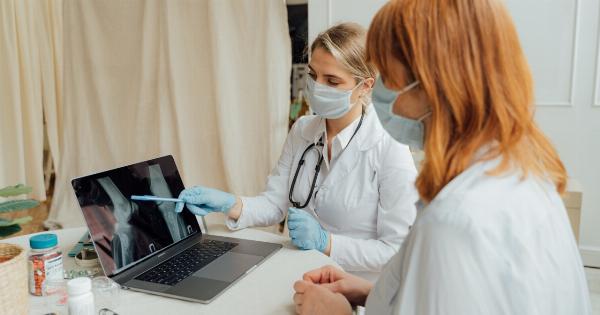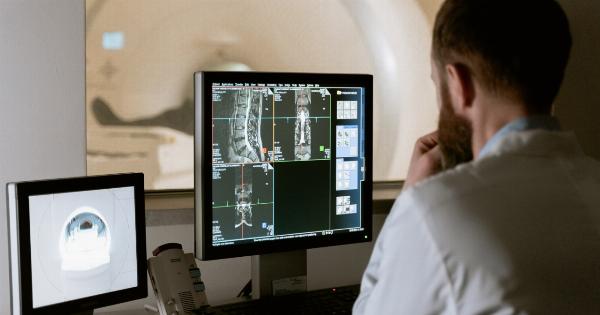Osteoporosis is a debilitating condition that affects millions of people worldwide. It is characterized by weak and brittle bones, making individuals prone to fractures and breaks.
Traditional treatment options for osteoporosis, such as medication and physical therapy, aim to slow down bone loss and manage symptoms. However, these methods have limitations and may not be effective for everyone.
In recent years, there has been growing interest in the use of stem cell therapy as a potential treatment for osteoporosis.
Stem cells, with their remarkable regenerative abilities, offer new hope for those suffering from this debilitating condition. This article explores the miracle of stem cell treatment for osteoporosis and its potential to revolutionize the way we approach and treat this disease.
Understanding Osteoporosis
Before we delve into the potential of stem cell therapy, it is important to understand what osteoporosis is and how it affects the body. Osteoporosis is a progressive condition that weakens the bones, making them more prone to fractures and breaks.
It occurs when the body loses too much bone, makes too little bone, or both. As a result, the bones become porous and brittle, significantly increasing the risk of fractures, particularly in the hips, spine, and wrists.
Current Treatment Options for Osteoporosis
Currently, the main treatment options for osteoporosis focus on managing symptoms and preventing further bone loss. These treatments include:.
Medication
Several medications are available to help slow down bone loss and reduce the risk of fractures in individuals with osteoporosis. These medications often work by regulating bone turnover and increasing bone density.
However, they may come with side effects and are not always effective for everyone.
Diet and Nutrition
Adequate nutrition and a balanced diet rich in calcium and vitamin D are essential for maintaining strong and healthy bones. Diet and nutrition play a crucial role in the prevention and management of osteoporosis.
However, dietary changes alone may not be sufficient to stop or reverse the progression of the disease.
Exercise and Physical Therapy
Regular exercise, especially weight-bearing and resistance exercises, can help improve bone density and strength. Physical therapy also plays an important role in managing pain, improving mobility, and reducing the risk of falls and fractures.
However, exercise and physical therapy alone may not be enough to treat severe cases of osteoporosis.
The Promise of Stem Cell Therapy
Stem cell therapy holds tremendous promise for the treatment of various degenerative diseases, including osteoporosis. Stem cells are undifferentiated cells that have the ability to develop into different types of cells in the body.
They can be obtained from various sources, such as bone marrow or adipose tissue.
Stem Cells and Bone Regeneration
When it comes to osteoporosis, stem cells have the potential to regenerate and repair damaged bone tissue. These cells can differentiate into osteoblasts, which are responsible for the formation of new bone tissue.
By introducing stem cells into the affected area, it is possible to stimulate the growth of new bone cells and potentially reverse the progression of osteoporosis.
Types of Stem Cell Therapies for Osteoporosis
There are several types of stem cell therapies that have shown promise in the treatment of osteoporosis:.
Autologous Stem Cell Transplantation
In this type of therapy, stem cells are harvested from the patient’s own body, typically from the bone marrow or adipose tissue. These cells are then processed and reinjected into the affected area.
Autologous stem cell transplantation has shown promising results in promoting bone regeneration and reducing the risk of fractures.
Allogeneic Stem Cell Transplantation
In allogeneic stem cell transplantation, stem cells are obtained from a donor and transplanted into the patient. This type of therapy requires matching the donor’s cells with the patient’s to minimize the risk of rejection.
Allogeneic stem cell transplantation has the advantage of providing a larger number of cells for transplantation, potentially improving the treatment outcome.
Induced Pluripotent Stem Cells
Induced pluripotent stem cells (iPSCs) are another type of stem cells that hold great potential for osteoporosis treatment. iPSCs are derived from adult cells, such as skin cells, and reprogrammed to have the characteristics of embryonic stem cells.
These cells can then be coaxed into differentiating into osteoblasts, offering a potential unlimited supply for bone regeneration.
Challenges and Future Directions
Although stem cell therapy shows great promise for the treatment of osteoporosis, there are still challenges and limitations that need to be addressed.
These include the potential for immune rejection, the risk of tumor formation, and the optimization of delivery methods. Further research is needed to overcome these barriers and ensure the safety and efficacy of stem cell therapy for osteoporosis.
Conclusion
The miracle of stem cell treatment for osteoporosis offers new hope for patients suffering from this debilitating condition.
Stem cells have the remarkable ability to regenerate and repair damaged bone tissue, potentially reversing the progression of osteoporosis. While challenges and limitations remain, ongoing research and advancements in stem cell therapy hold great promise for the future of osteoporosis treatment.


























